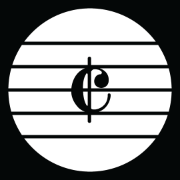-
Posts
78 -
Joined
-
Last visited
-
Days Won
7
Snake_Cake last won the day on December 13 2021
Snake_Cake had the most liked content!
About Snake_Cake

Contact Methods
-
Website URL
https://albertdelaf.com/
Profile Information
-
Gender
Male
-
Location
Barcelona
-
Occupation
Mechanical engineer
-
Favorite Composers
Bach, almost all the Classical & Romantic greats, Debussy, Ravel, Scriabin, pre-1920 Stravinsky, Prokofiev, Bartók, Evans, Kapustin
-
My Compositional Styles
Usually tonal, jazz/world music influences, classical design. Might write pastiches sometimes.
-
Notation Software/Sequencers
Sibelius (unfortunately)
-
Instruments Played
Piano
Recent Profile Visitors
785 profile views
Snake_Cake's Achievements
-
.thumb.jpg.c0a72d70ca19ec34c5702ec7e7951f37.jpg)
Symphony No. 1 (In Progress)
Snake_Cake replied to WowBroThatWasReallyEdgy's topic in Orchestral and Large Ensemble
I've listeded up to the exposition repeat so far. Pretty solid attempt! Some orchestration/notation things: 1) The 3rd trombone (bass tr.) needs its own staff. Also, remember that one of its main roles is playing in octaves with the tuba instead of going with the other trombones. 2) You need to specify the number of winds at least on the first page. I'll assume you had in mind 2/2/2/2/ -- 2/2/3/1 -- timp -- str. 3) Div. and unis. is only for strings, use a2 (or a3) for winds. 4) Better don't use repeat slashes in the trumpet (e.g. measure 54) for double-tonguing. The slashes are usually reserved for fluttertongue. 5) Meas. 104: the violins need a slur for that run 6) Be careful with flutes on the first octave in loud passages. In meas. 122 they'll sound much weaker than the other wind entries (and everything will probably be drowned by the trombones playing FF. 7) While not specified anywhere, you seem to be writing for just 2 horns. Better use 4, it's the orchestral default, and only two will be too weak against 2 trumpets and 3 trombones. 8 ) Be careful with clarinets playing in octaves. The fact that they lack eve-numbered partials make their octaves unusually strident. Reserve that effect for deliebrately uncomfortable moments. 9) In measure 4 you may have balance issues, the brasses will overpower the clarinets and bassoons. Use different dynamics for the two families and/or use only a single trombone vs. double woodwinds. 10) Pizzicato strings don't need staccato dots most of the time (maybe unless it's a low cello/bass note). 11) Measuee 93: Use woodwind 'dovetailing' with a lot of care. In this case, the 2nd flute won't be heard because it's in its 1st octave. In case of doubt, resort to the classics: either superposition (each woodwind family plays 2 notes, and one family plays on top of the other), or partial overlap (e.g. cl.1=ob.2 and ob.1=fl.2), and be sure all the instruments are in their strong or weak register. I must say that, nevertheless, you avoided most of the typical pitfalls of early orchestration, so congrats! -
Tough one, and I agree with some such as Beethoven's C minor variations and Alkan's Festin. Some other sets I love are the slow movement of Scriabin's piano concerto, and Szymanowski's two sets of piano variations.
-
Lmao. Is that Beethoven's 5th inverted? It's probably not just inverted in some spots. Then you have Mozart's Sonata Facile. Eh, at least, unlike DailyDuo, you aren't quoting melodies verbatim.
-
.thumb.jpg.c0a72d70ca19ec34c5702ec7e7951f37.jpg)
How do I expand this theme?
Snake_Cake replied to DailyDuo's topic in Incomplete Works; Writer's Block and Suggestions
This time you're plagiarizing Rachmaninoff's Italian Polka. This isn't a passing, inoffensive quote, but a long, copy-pasted passage from another work and there's no acknowledgement whatsoever. I've lost count of how many times you've done this. Why are you still convinced you can get away with it? Please don't insult my intelligence again by saying it was an "accident". -
ummm what?
-
It's a cool piece, the title fits it very well! Some random thoughts: 1) You notated the opening motif as completely detached. Not sure if that's what you intend, in musical terms I think that would work better with some slurring (how much is up to you, you may just slur the first 2 notes, the whole 5 notes, etc.). Also, I'm hearing your audio as if it was slurred, some programs (such as Noteperformer) tend to slur detached passages if played extremely fast, because it's almost physically impossible to play them properly. 2) That new motif at measure 5 would be way more readable if notated in duplets (+staccato). 3) Those dashed lines in the crescendos are unnecessary, this is some old-fashioned practice that adds unnecessary clutter (you just know the crescendo will keep going on until the next dynamic). 4) You're asking about using sharps/flats. As a rule of thumb, try to choose those accidentals that tend to look similar to typical chords and tonal things. This is a very loose guideline, but try to avoid stuff like diminished 4ths, augmented 3rds, mixing flats and sharps that are in opposite sides of the circle of fifths, etc. E.g. if you write something that resembles an Ebm(maj7,9) chord, write it as such, not with Eb's but with A#'s. cheers
-
This is excellent! Very elegant and in-style writing and the performance helps bring the notes into life. If I had to make a single suggestion, I'd try maybe to end the first half of at least one of the binary forms on the dominant, since that's what happens in most classical-era minuets (and other stuff in large ternary forms). This is more common in the main minuet than in the trio. Keep writing!
-
This is really gorgeous, the piano writing is so fluid and colorful! I wish my improvisations were as rich as this.
-
.thumb.jpg.c0a72d70ca19ec34c5702ec7e7951f37.jpg)
Extract for A clarinet - is transposition for B clarinet necessary?
Snake_Cake replied to DailyDuo's topic in Performance
yes -
.thumb.jpg.c0a72d70ca19ec34c5702ec7e7951f37.jpg)
Extract for A clarinet - is transposition for B clarinet necessary?
Snake_Cake replied to DailyDuo's topic in Performance
🙄 -
.thumb.jpg.c0a72d70ca19ec34c5702ec7e7951f37.jpg)
Extract for A clarinet - is transposition for B clarinet necessary?
Snake_Cake replied to DailyDuo's topic in Performance
Any professional classical clarinettist is supposed to own 2 clarinets, one in A and the other in Bb. If you don't, you'll have to transpose it by hand (even though the pros tend to be able to do it by sight usually). -
Hi, thanks for the kind words! I think I'll leave this aside for a few days, it tends to help me figure out this kind of choices. Thanks! The 1st is the one I'll use for sure. The 3rd is actually what you're already saying, a theme I put aside to reuse in the future (it' from 2019, while the others are new). There's no need to hurry, I can lay in my drawer one more year.
-
Snake_Cake started following Several themes for a rondo, which ones do I use?
-
Here's a playlist with 4 videos, each containing a different theme (numbered 1,2,3 and 4): With these, I'd like to build a 7-part rondo (ABACABA), where "C" includes both a new theme and developmental episodes of theme A (typical rondo-sonata form hybrid). Here are some possible layouts I can think of: --- Layout 1 A = theme 1 (always) B = theme 2 C = theme 3 (or theme 4?) --- Layout 2 A = theme 1 B = something, idk (theme 4?) C = theme 2 --- Disregard the key each theme is in, everything can be transposed. Basically, if I use theme 3, it needs to be a "C" (because I don't want to have a 3/4 meter change instead of a sonata-like exposition). However, theme 2 could work both as B or C. I'm not sure theme 4 fits with the style completely, even though I like it quite a bit. Any suggestions?











